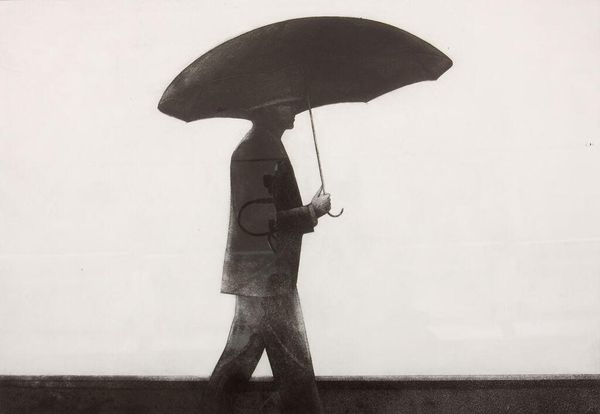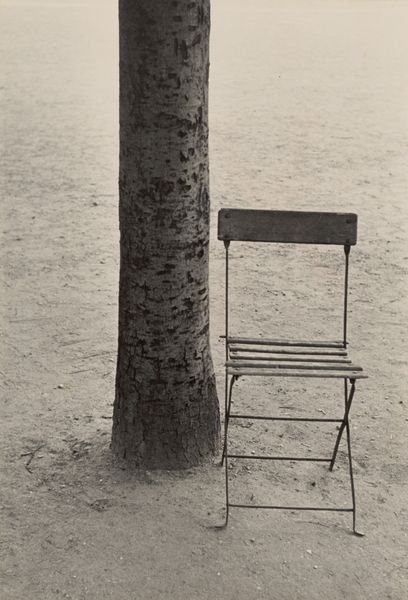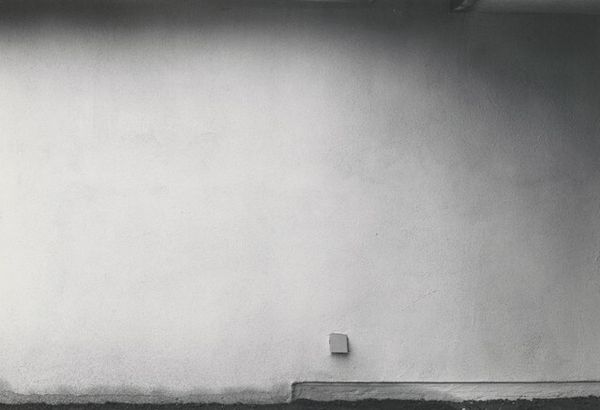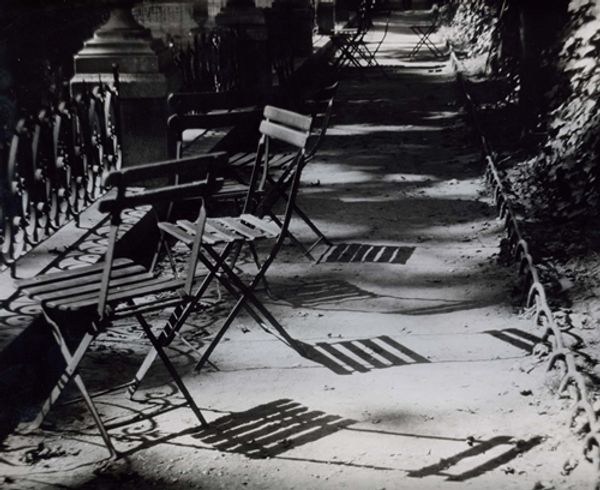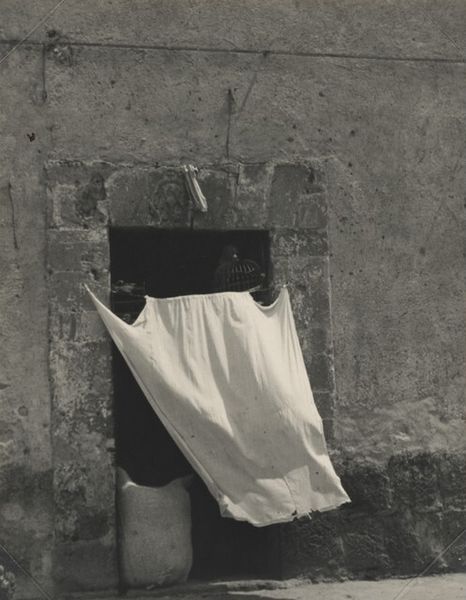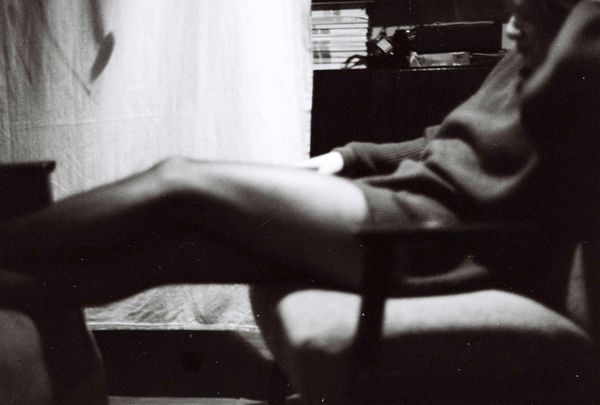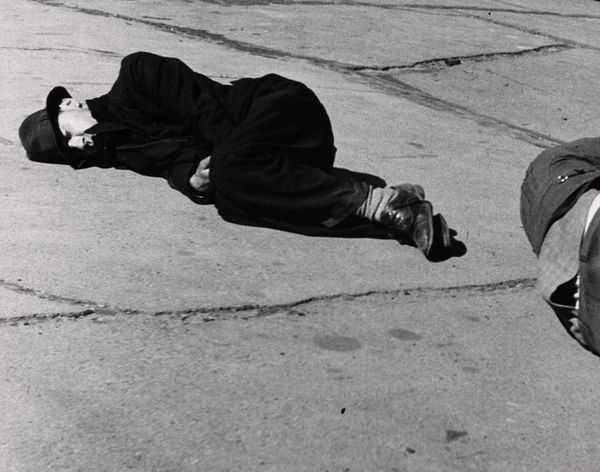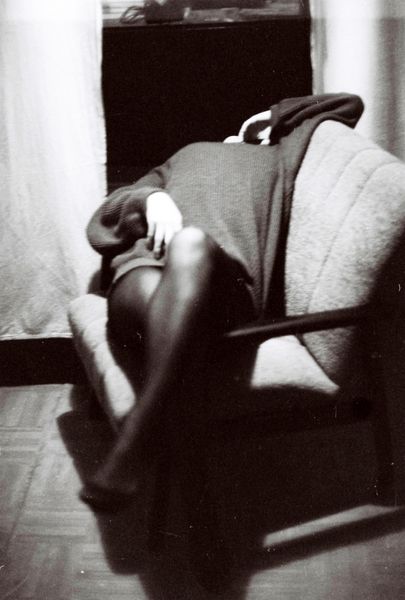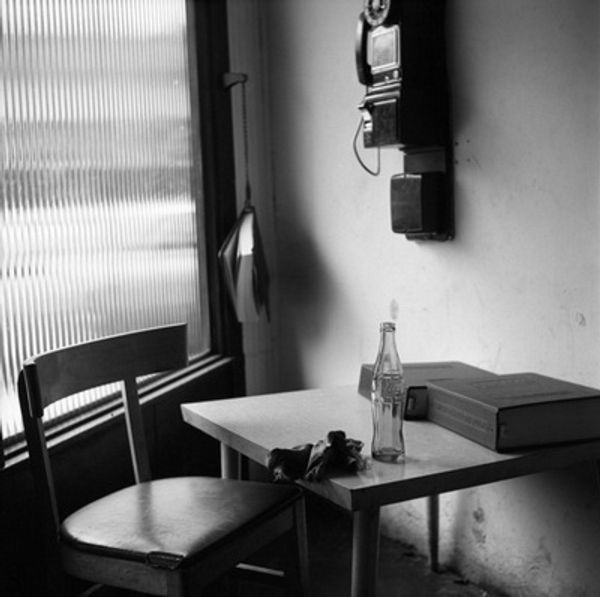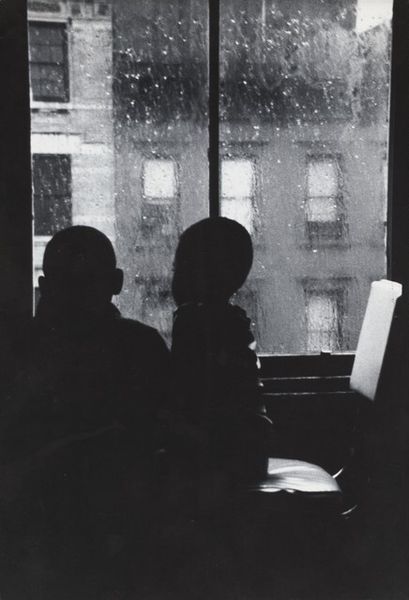
Dimensions: image: 25.2 × 25.1 cm (9 15/16 × 9 7/8 in.) sheet: 39.37 × 30.16 cm (15 1/2 × 11 7/8 in.)
Copyright: National Gallery of Art: CC0 1.0
Curator: Look at this gelatin silver print, “Couple Under Umbrella, Tuileries,” taken by Louis Stettner in 1997. It depicts a couple embracing on a park bench, their faces obscured by a large umbrella. Editor: My immediate reaction is intimacy. Even in monochrome, there’s something deeply private captured in a public space, a kind of cloaked world. It’s interesting that the umbrella, normally a symbol of protection from the elements, is instead used to create this private moment. Curator: Exactly. Stettner's work frequently examines the performance of everyday life, especially in urban environments. Considering this piece within the context of his broader work reveals a focus on the hidden, often overlooked intimacies in public settings, and this picture does seem to embrace that theme. How do you interpret that choice of a public location versus a private space, conceptually? Editor: Well, there's the element of societal rules around displays of affection. Placing them in the Tuileries Gardens introduces a dialogue about access, visibility, and who gets to claim space for romance. Is it commentary on the increasing privatization of public spaces, the need for covert expressions of love due to social constraints? Or is it romanticising what love might look like at its most private when done so brazenly out in the open? Curator: Interesting questions to raise around visibility. Considering Stettner's historical moment, what could a photograph of hidden, intimate love signify beyond the obvious sentimentality? Perhaps a commentary on the policing of queer love? The lack of identifiable features invites interpretation across intersectional lines. Editor: Precisely. The black-and-white medium further abstracts them. This creates an openness where diverse identities can find resonance and make it even harder to situate who exactly the couple may be, creating tension and speculation in viewers. We have to bring in all this socio-historical background to bear because otherwise, what else is there? A grayscale snapshot of lovers hiding from view? Curator: I would simply argue it provides a valuable commentary on privacy within shared spaces and leaves more for the imagination. Seeing how its reception changed in varied socio-political contexts and how the piece still generates relevant dialogues—its political undertones shift with the changing times, cementing Stettner's work in social discourse beyond mere visual appeal. Editor: And by bringing forth these multiple dialogues that people may or may not notice otherwise, we provide our viewers with the critical skills to contextualise a seemingly innocent art piece within a wide scope of perspectives, giving nuance where they’re more inclined to only see romance! Curator: It highlights how interpretations can transform the essence of art and our understanding of social and personal histories as we bring attention to themes easily taken for granted.
Comments
No comments
Be the first to comment and join the conversation on the ultimate creative platform.
